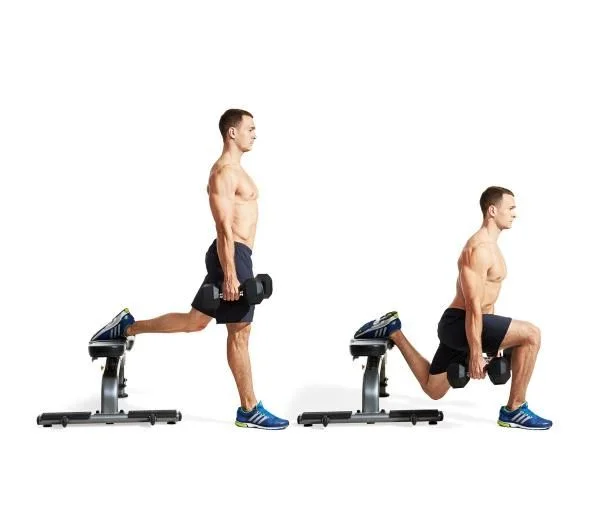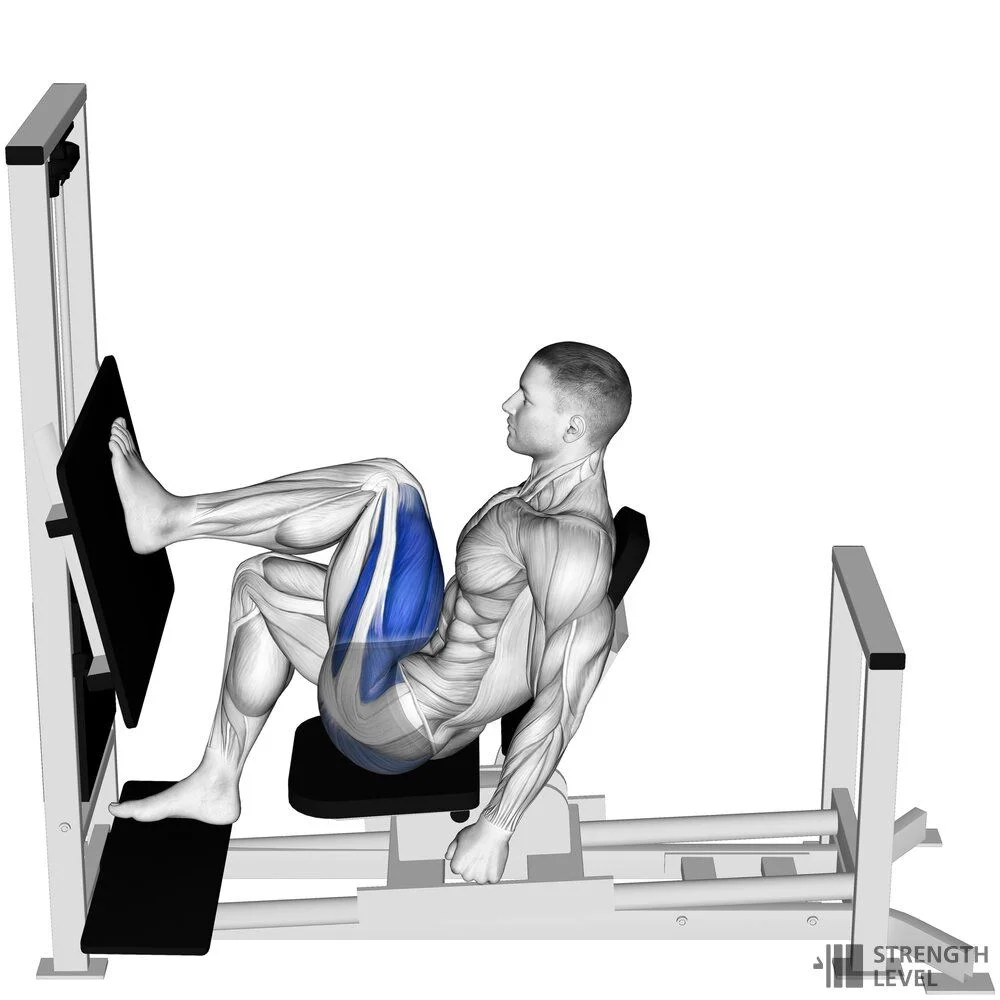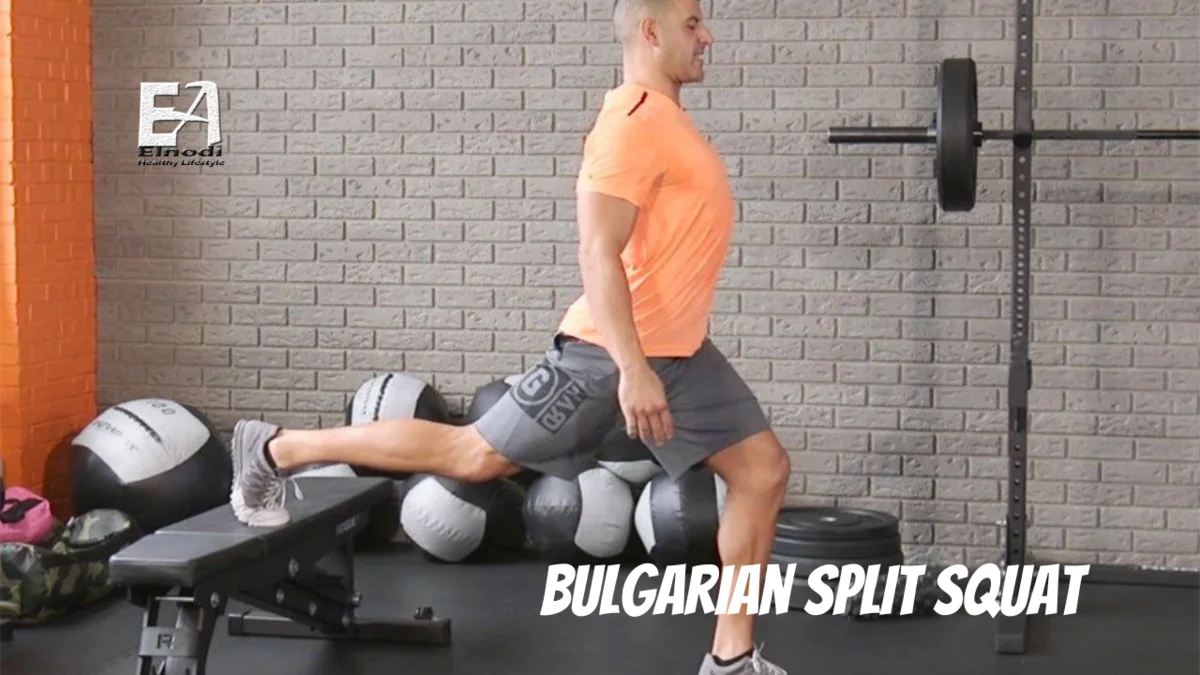Try the Bulgarian Split Squat! If you’re looking for a perfect addition to your fitness routine, It’s simple to do but will help you build stronger muscles.
Do you have a weak lower half? Are your quads and hamstrings struggling to take your weight? Do you find it hard to balance and pivot in a confined space? Bulgarian Split Squat can help! This foundational exercise strengthens your muscles in other key areas like your core and glutes, which will help improve your overall balance. Give it a try today!
What is the Bulgarian Split Squat?
The split squat is a lower-body workout that can help you build tremendous quad, hamstring, glute, and cavalry strength. The term “Bulgarian split squat” refers to the exercise’s alleged origin and method of execution.
This is a unilateral exercise that emphasizes the front leg, with the supporting foot placed on an elevated, sturdy structure behind the torso. (1)
Bulgarian split squat benefits
Build muscle and strength
The Bulgarian split squat strengthens your quads, glutes, and adductors in a solid position and over a wide range of motion. That is an excellent muscle-building formula!
Prevent muscle imbalance
Because you only work one leg at a time, the split squat can be used to identify and correct muscular imbalances. Work on bringing your weak side up to par with the other side.
Improve coordination and balance
We often take balance for granted – until we lose it. By training the split squat, you can improve your coordination and balance tremendously.
Better knee control
In athletics, a lack of knee control is a recipe for disaster. The split squat is one of the most efficient exercises for developing positional awareness and knee control.
Unload your spine
Do you want to stretch your leg muscles without straining your back? You may target your leg and glute muscles with the Bulgarian split squat by utilizing dumbbells instead of a hefty barbell over your shoulders.
Bulgarian split squat muscles worked
The Bulgarian split squat primarily works your quadriceps, glutes, and adductors.
By performing the exercise with only your body weight or with a dumbbell in each hand instead of a barbell across your shoulders, you relieve some of the strain on your lower back. However, it has no effect on the muscles used in the exercise. (2)
Bulgarian split squat form
How to do Dumbbell Bulgarian Split Squat

Instructions
- Set up in a split stance, holding dumbbells at your sides with a neutral grip.
- Position the back foot on a bench or circular pad to increase the range of motion.
- Descend by bending the front knee and continuing until the back knee is precisely beneath the hip.
- Drive through the front foot and extend the knee as you return to the starting position.
- Repeat for the desired number of repetitions.
Tips
- This version can be done on a bench, but it may be slightly more unpleasant on the ankle joint. As a result, it may be advisable to utilize the pad on the leg extension machine or the squat pad linked to a lower-height bar. The back foot should ideally be at or slightly below knee height. Setting your rear foot too high will most likely cause your lumbar spine to extend excessively.
- If you want to emphasize the quads during the split squat, focus on taking a slightly smaller split stance and driving up through the ball of the foot.
- If you want to emphasize the glutes and hamstrings during the split squat, focus on taking a slightly larger split stance and driving up through the heel of the foot.
- Allowing for slightly more torso lean throughout the drill may be more advantageous if you’re an overextended athlete, as this will aid in keeping your spine neutral and load the front leg more effectively.
- If the front leg keeps diving in excessively as you reverse from the eccentric to concentric, attach a band to a rack, loop one end around your knee, and allow it to pull you into a valgus position (not excessively, just slightly). From here, push out against the band to engage the glute and keep yourself in a more neutral position.
- You don’t have to feel like you have to be entirely erect while performing the movement. On the contrary, you should bend slightly forward and keep your lumbar spine neutral.
Common Mistakes in the Bulgarian Split Squat
Poor knee control
Allowing your knee to fold inwards reduces the efficiency of the movement and can cause knee pain. Throughout the action, keep your knee in line with your toes.
Leaning too far forward
Leaning too far forward will add excessive stress to the lower back and reduce focus on the target muscles. Try to keep your torso as upright as possible during the entire movement.
Pushing yourself up with your rear leg
In the split squat, your front leg should be working, not your back leg. Use your back leg to balance, but not to force yourself up (excessively). When you swap sides, you’ll work that leg.
Safety and Precautions
The best strategies to keep the split squat safe are proper setup and adequate core engagement. Take your time determining proper foot alignment and placement to avoid being tempted to push forward from the hips and toss your center of gravity in front of your front knee. This puts too much strain on the knee and may result in damage.
If you’re new to strength training or have trouble staying balanced while performing regular lunges, the split squat is probably not for you. Similarly, if you have knee or ankle problems or injuries, the flexibility and mobility required to complete this action correctly may be inconvenient for you.
If you feel any pain or discomfort, discontinue the movement and try the split squat variation with your back foot balanced on the floor.
Bulgarian split squat alternative
Reverse Lunges

Though other alternatives to the split squat may be very effective in some instances, persons who do not have major health concerns or injuries will frequently discover that the reverse lunge exercise best matches the specific criteria of a substitute exercise.
Bench Single Leg Hip Thrusts

A hip thrust variation with just unilateral activation with the exerciser positioned at such an angle that the muscular activation pattern is slightly altered, shifting some of the weight to the gluteus muscles in addition to the hip flexors and quadriceps femoris muscle group.
Single Leg, Leg Press

The single leg or unilateral leg press is a hotly debated modification of the machine-based leg press exercise that is primarily performed by advanced-level exercisers in order to more closely focus on their mind-muscle connection throughout the repetition, allowing for greater muscular contraction and power output at the expense of time and risk of injury.
Bulgarian Split Squat Variations
Barbell Bulgarian Split Squat

Another approach to add resistance is to perform a regular squat with a barbell on your back. This variety, however, is a little more difficult to start and balance.
The exercise is completed normally once the bar is on your shoulders. The disadvantage is that it is difficult to drop the bar if you lose your equilibrium. So, unless you’re an experienced player, don’t try this variation.
TRX Bulgarian Split Squat

TRX bands, often known as suspension trainers, are a type of workout equipment that consists of a series of adjustable straps with handles and foot cradles. Then you secure them to an anchor point, such as a door frame or a strong pole.
You can use the foot cradle to do unilateral leg workouts like the Bulgarian split squat. The band in this form can move as you crouch down, allowing for a more natural movement pattern.
Bulgarian split squat smith machine

Smith’s machine Bulgarian split squat with Smith machine is a version of the Bulgarian split squat that uses the Smith machine to assist you in maintaining perfect form. It is a difficult workout that targets the working leg’s quads, hamstrings, glutes, and calves.
Bulgarian split squat vs. squat
Both the Bulgarian split squats and the squat are compound workouts that target the quadriceps, hamstrings, glutes, and calves. There are, however, some significant distinctions between the two tasks.
| Characteristic | Bulgarian Split Squat | Squat |
|---|---|---|
| Muscles worked | Quads, hamstrings, glutes, calves | Quads, hamstrings, glutes, calves |
| Type of exercise | Unilateral | Bilateral |
| Depth | Deeper | Not as deep |
| Balance | More challenging | Less challenging |
| Knee stress | More stress | Less stress |
| Intensity | Higher | Lower |
| Progression | Start with the squat and progress to the Bulgarian split squat | Start with the Bulgarian split squat drive_spreadsheet |
Summary
Split squats are excellent for your legs and abs. Furthermore, because it requires less of the lower back, this exercise may be favored over a standard squat for increasing lower-body strength. Master the proper form, and you’ll be well on your road to increased strength.
FAQs
Is Bulgarian split squat for glutes?
what muscles does Bulgarian split squat target?
do you switch legs on Bulgarian split squat?
References
1. Mackey, E. R., & Riemann, B. L. (2021). Biomechanical differences between the Bulgarian split-squat and back squat. International journal of exercise science, 14(1), 533.
2. Liao, K., Bian, C., Chen, Z., Yuan, Z., Bishop, C., Han, M., … & Zheng, Y. (2023). Repetition velocity as a measure of loading intensity in the free weight and Smith machine Bulgarian split squat. PeerJ, 11, e15863.





